Day 2 of a three day long weekend of tours, and it was down to the Norfolk Broads today. It was a lovely sunny start to the day, although it clouded over late morning and then tried to rain on and off in the afternoon. Thankfully the rain was only light, just spitting with drizzle at times, so it didn’t stop us getting out.
Our first destination saw us driving along the coast road past Horsey. We had hoped we might find some Cranes along here, particularly on a lovely bright morning, but there was no sign of any today. We found a convenient layby to park and stretch our legs. There were lots of Pink-footed Geese out on the grazing meadows but they were very jumpy, constantly flying up and landing again. A light aircraft flew round over the fields, possibly the source of some of the nervousness.
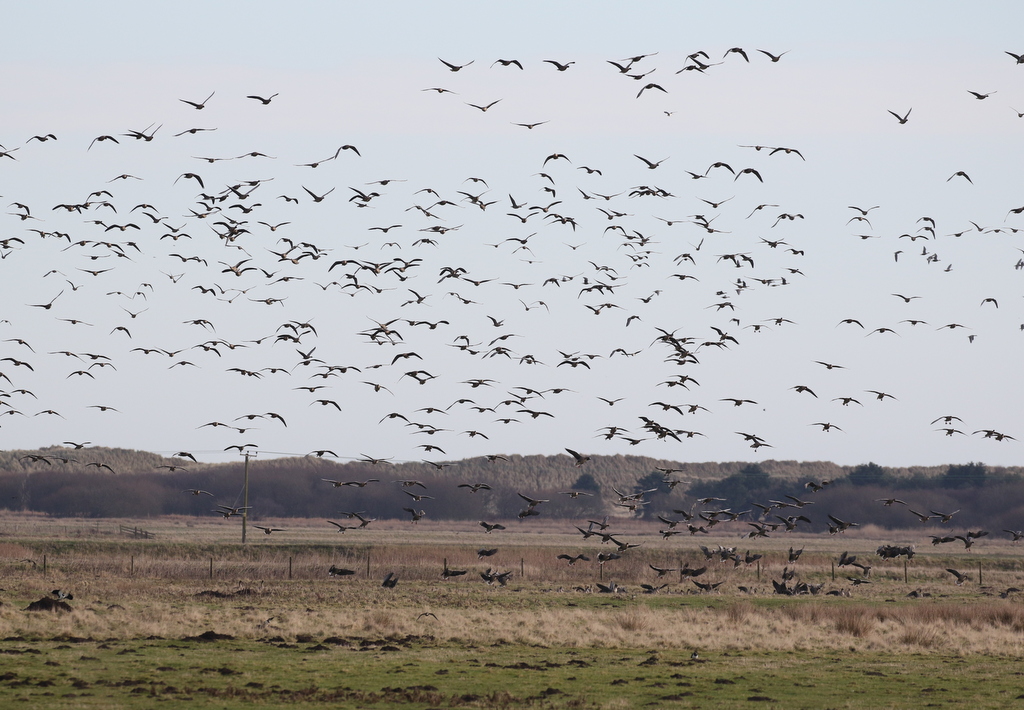
There were also lots of Lapwings and a few Fieldfares out on the grass. We could see several Marsh Harriers circling over the reeds behind us. A couple of large herds of Mute Swans were out in the fields. With all the disturbance, there were not as many birds out here as there often are, so we moved quickly on.
Our next stop was round at Ludham. As we climbed up onto the river bank, we could see a small group of swans out on the grazing marshes. A closer look with the scope confirmed there were six Whooper Swans with a similar number of Mute Swans. We could see the prominent yellow wedge running down the bills to a sharp point on the Whooper Swans, and they were not much smaller than the accompanying Mutes.
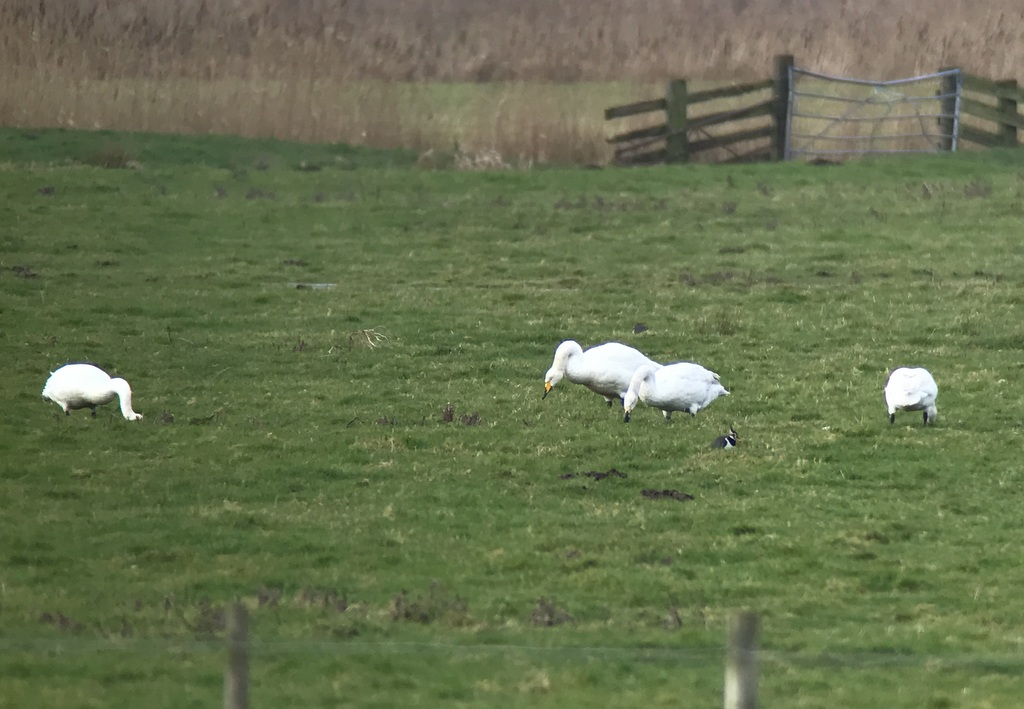
Three Stock Doves were out in the field next to the cow barn and a couple of Pied Wagtails were picking around the muddy farm yard. Scanning the grass, we could see lots of Lapwing and Golden Plover and several Chinese Water Deer too. Looking along the river, a pair of Gadwall were swimming with a few Coot. But there were no Cranes here today either. It was a lovely morning and the footpath along the river bank was very busy with dog walkers, which meant there was presumably too much disturbance. Were we destined to miss out on the Cranes everywhere today?
We moved on again and headed south. Looking out of the window as we were driving along the road, we finally found our first Cranes of the day, standing in the field where we had seen a big group the other day. At first we could only see five together, on the edge of the maize strip. Then we looked round behind us, just in time to see another 14 Cranes circling in the sky. They disappeared off towards the river, dropping down behind some trees. We didn’t see where they had come from but someone was shooting pigeons a couple of fields over, so may have flushed them.

Looking back at the original group, more Cranes started to emerge from the maize strip. Scanning the surrounding fields, we also found another pair nearby. The more we looked, the more we found and by the end we had 15 Cranes together in the field, and there could easily have still been some hiding in the crop. It was quite a sight!
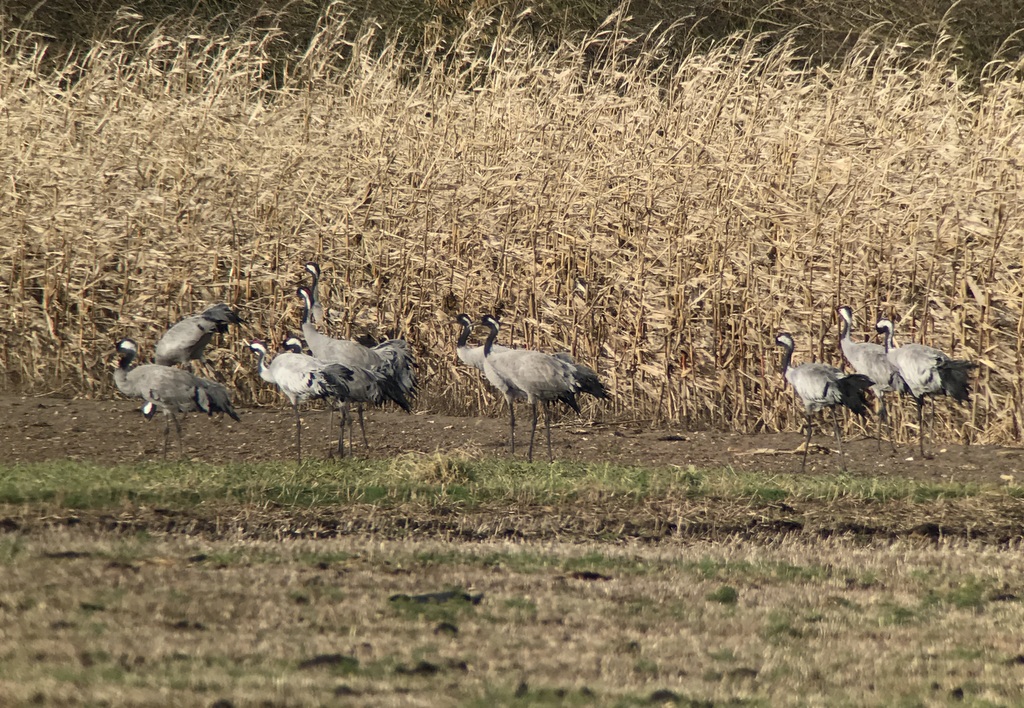
There was even some more action. At one point, six of the Cranes flew up and circled round. There was lots of bugling, the calls echoing across the fields. Two flew off, but four of the Cranes dropped back down with the others again. Great stuff!
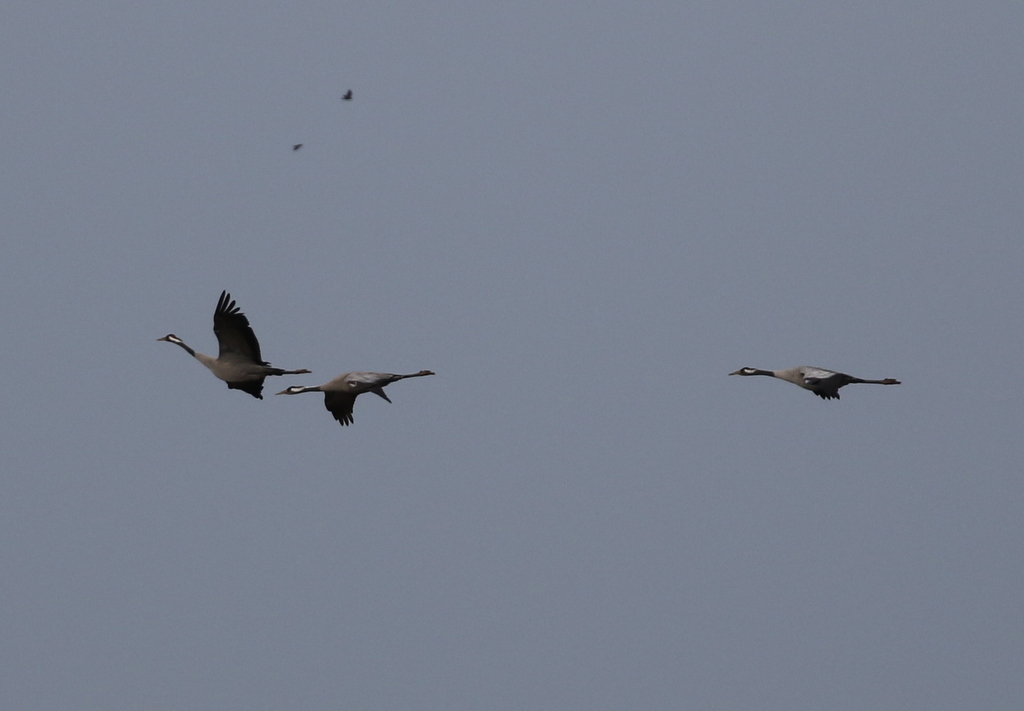
Having finally found some Cranes – and enjoyed cracking views of a really good number to boot (it is not often we see large flocks such as this here, a significant proportion of the total Broadland population!), we headed on, down to the Yare valley. As we walked down to the gate and scanned the marshes at Cantley, it was rather disappointing. There were almost no geese here today – just a single Egyptian Goose which doesn’t really count! Otherwise, all we could see were Rooks, Lapwings and a few Mute Swans.
Darker clouds were gathering to the south, so we didn’t hang around here too long and made our way back to the car. As we were loading up, we looked across to the nearby sugar beet processing factory and noticed a small shape on the side of the tall steaming chimney. It was a Peregrine. Presumably it had found somewhere to keep warm?
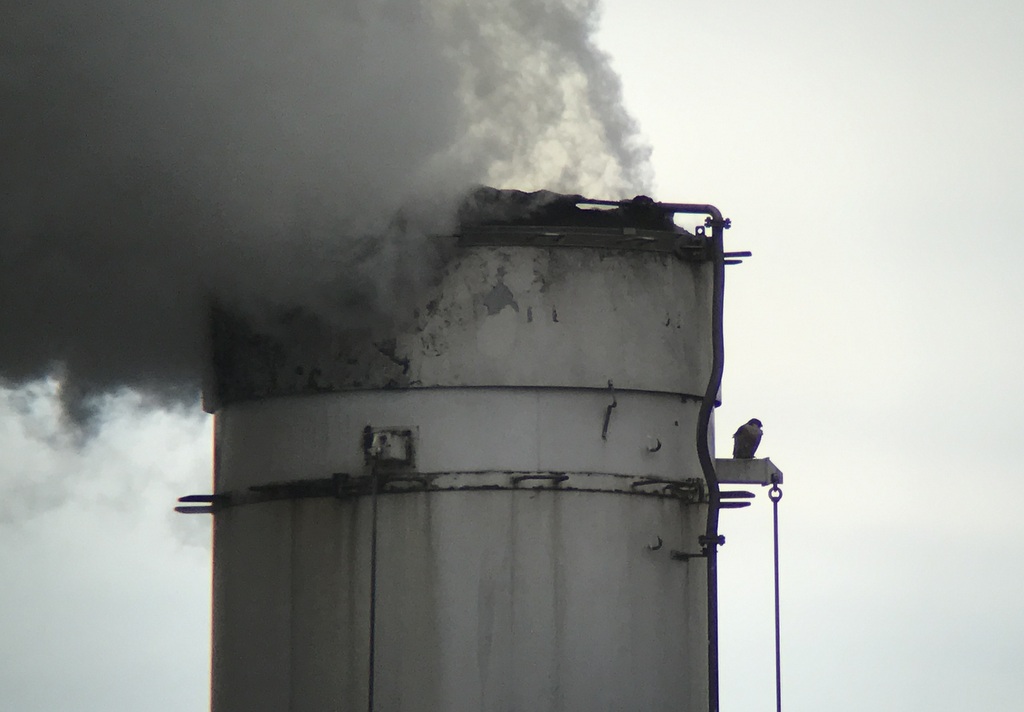
At this point it started to spit with rain. We decided it would be a good moment for an early lunch, so we made our way round to Strumpshaw Fen. As we walked out to the Reception Hide, we stopped to look at all the tits coming down to the feeders A Marsh Tit made several visits as we watched, mostly dropping down to the ground where some seed had been sprinkled. A Jay came up from the path too as we arrived, and a Siskin flew over calling.
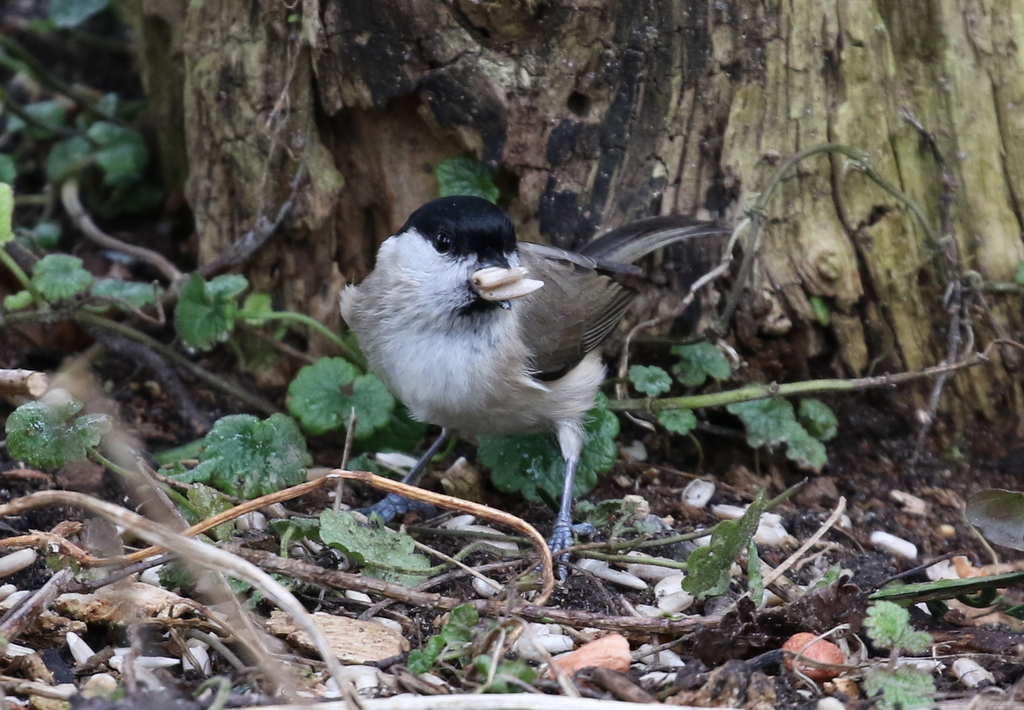
Looking out across the Reception Hide pool, there were lots of Gadwall and Coot on the water today. A little group of Shoveler didn’t linger and a couple of flocks of Teal flew over without landing. The Black Swan was in hiding today. A couple of Marsh Harriers circled over the reeds. As well as providing a very welcome hot drink, the Reception Hide also gave us great views of a very well camouflaged Common Snipe feeding in the cut reeds in front.
After lunch, the rain had stopped, so we headed back out towards the coast. A quick detour off the Acle Straight towards Halvergate produced four Bewick’s Swans out on the grazing marshes. This is a traditional stop off point for swans heading back towards the continent in late winter, so can often be a good place to look late in the season, when the wintering birds have departed. We could see immediately that they were small and short-necked compared to the Mute and Whooper Swans we had seen earlier and through the scope we could see the more restricted, squared off yellow patch on their bills.

Continuing on to Great Yarmouth, we quickly located the Glossy Ibis in its usual field at Bure Park. It was very busy feeding down in the wet grass, finding a few worms while we watched. A wet grassy park in Great Yarmouth in winter must be a far cry from the marshes of southern Spain, but it seemed to be doing OK with a few Moorhens and Black-headed Gulls for company.
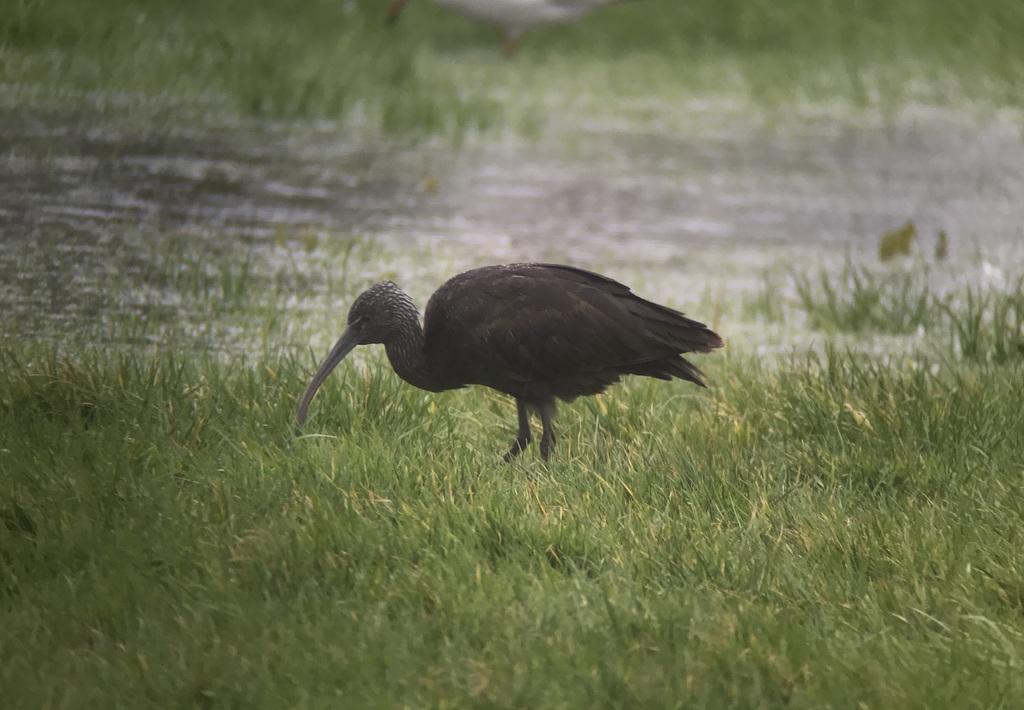
After a quick stop to catch up with the Glossy Ibis, we made our way on further south again, down to Waveney Forest. It was spitting with rain now but it was relatively sheltered from the wind in the trees. Looking out across Haddiscoe Island from ‘the mound’, it appeared rather desolate at first. The gates and posts where the Buzzards like to perch were conspicuously empty but scanning more carefully, we quickly found our target. The Rough-legged Buzzard was standing down in the grass today, out in the middle.
It was rather distant, and a bit misty now, but we could see the Rough-legged Buzzard’s pale crown and white spotting in the upperparts, contrasting with its black throat and upper breast and black patches either side of its belly. This is a returning adult, which comes back to these grazing marshes each winter, from its breeding grounds in the arctic.
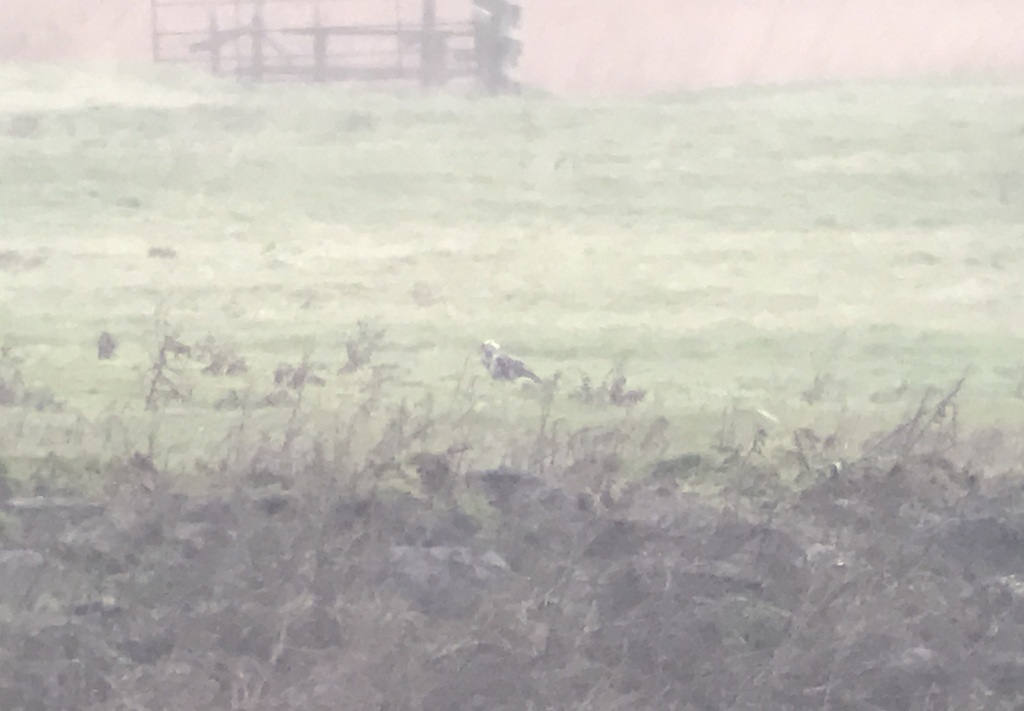
The cherry on the cake was duly provided when the Rough-legged Buzzard took off and flew low across the grass, flashing its distinctive white tail with a contrasting black terminal band. It turned into the wind and started hovering, like a giant Kestrel in slow motion. It repeated this several times – Rough-legged Buzzards are habitual hoverers when they hunt, unlike the more familiar Common Buzzard which will hover only occasionally. After hunting for a few minutes, the Rough-legged Buzzard flew back across and landed again down on the grass close to where it had been earlier.
We took that as our cue to leave. We weren’t sure whether we would make it out to Stubb Mill tonight, given the weather, but by the time we got to the car park at Hickling the rain had eased off again. We decided to give it a go. We took the direct route out today, along the road. Two Egyptian Geese were in one of the fields and four Cormorants flew over.
When we got to Stubb Mill, we immediately spotted two Cranes out on the grass. We had a good look at them through the scope, walking round, before they eventually flew round and dropped down in the reeds at the back. Shortly afterwards, someone spotted another pair, out in one of the meadows further over. And we could hear more Cranes bugling over towards the reserve – based on the noise, another two pairs at least.
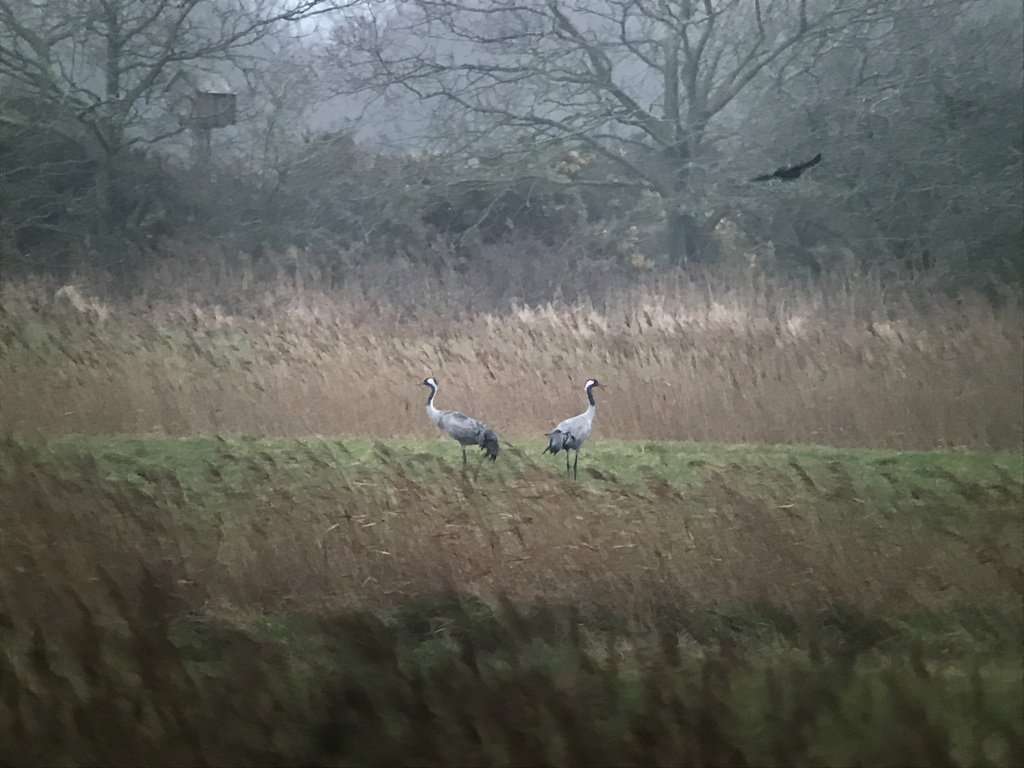
We had already amassed quite a total of Cranes on our travels today. Then another five flew in, low over the grass in front of the watchpoint, and disappeared over towards the reserve. That took us to a massive 38 seen and several more Cranes heard today!
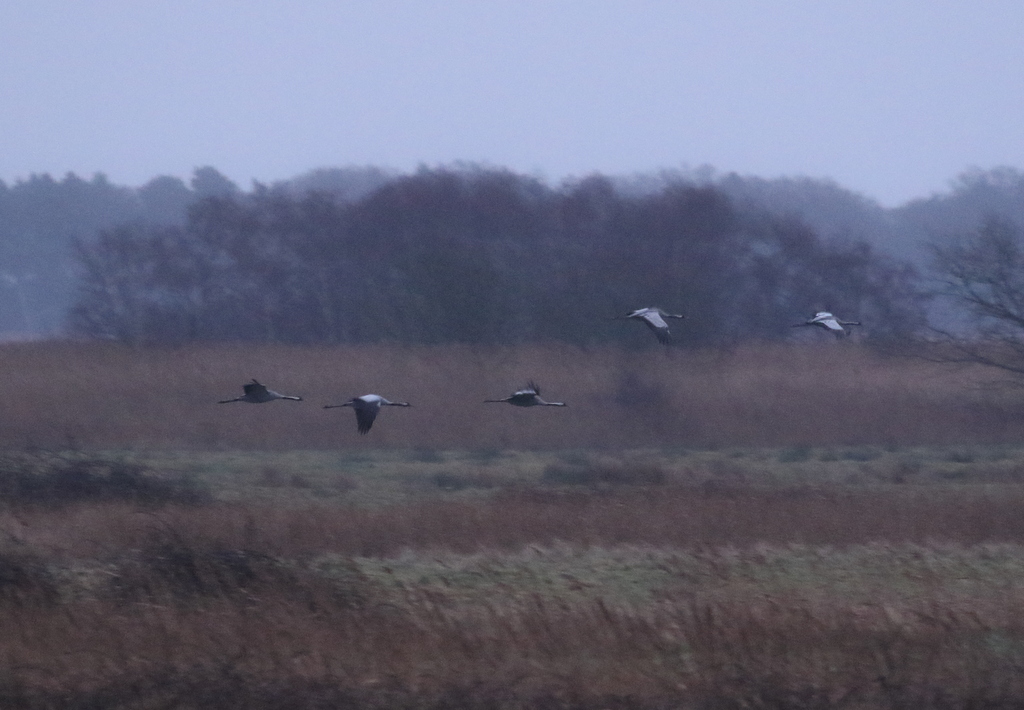
There were at least 5-6 Marsh Harriers in already, perched out in the bushes in the middle of the reeds or circling round overhead, but others were probably keeping down given the weather. Several more flew in while we were watching. A male Merlin shot across very low, only briefly breaking above the reeds, unfortunately too quickly for everyone to get onto it. A ghostly grey male Hen Harrier appeared in the distance, flying round above the bushes in the reeds where the Marsh Harriers were gathered for a couple of minutes, visible in the scope despite the gathering gloom.
Given the weather, the light was fading fast tonight. We had fared far better than we thought we might at Stubb Mill this evening, it was well worth coming out here. We decided to call it a night and head for home.
















